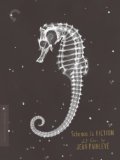| Reviews & Columns |
|
Reviews DVD TV on DVD Blu-ray 4K UHD International DVDs In Theaters Reviews by Studio Video Games Features Collector Series DVDs Easter Egg Database Interviews DVD Talk Radio Feature Articles Columns Anime Talk DVD Savant Horror DVDs The M.O.D. Squad Art House HD Talk Silent DVD
|
DVD Talk Forum |
|
|
| Resources |
|
DVD Price Search Customer Service #'s RCE Info Links |
|
Columns
|
|
|
Science Is Fiction: 23 Films by Jean Painlevé
Painlevé's first film L'œuf d'épinoche: de la fécondation à l'éclosion (The Stickleback's Egg) stirred controversy among scientists for the very idea of using film as a medium of science. When he presented the film to the French National Science Academy (Académie des Sciences) in 1928, many of the gathered researchers were outraged. Though Painlevé continued to make films for the scientific community, he increasingly also developed cuts for ordinary cinemagoers which were anything but staid.
Using unconventional cinematography and editing, anthropomorphizing narration, and wild jazz or early electronic music scores, Painlevé looked to sea life to make thinly veiled critiques of prevailing social norms, particularly with regard to gender politics. In L'Hippocampe (The Sea Horse, 1933) Painlevé took obvious pleasure in highlighting the responsibility of the male of the species to carry eggs and give birth, while Les Danseuses de mer (Sea Ballerinas, 1956), Comment naissent les méduses (How Some Jellyfish are Born, 1960) and Le bal des sorcières' (The Witches' Dance, 1972) all concern species that do not conform to the conventional gender divisions for sexual reproduction. Not limited to gender politics, Painlevé's post-war films Le Vampire (The Vampire) and Assassins d'eau douce (Freshwater Assassins) used the animal kingdom as proxies for denouncing the parasitic nature of National Socialism and mankind's inherent capacity for cruel barbarism.
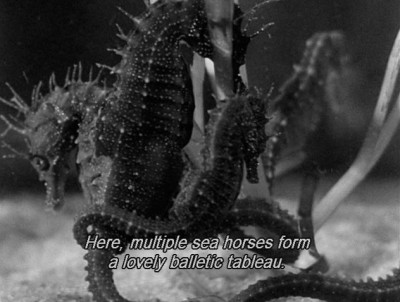 | 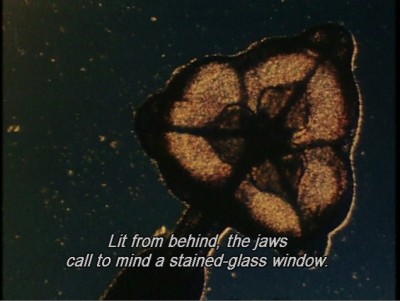 |
Painlevé was a technical pioneer in his use of extreme magnification and time lapse photography to focus and condense the spectacle of the natural world for cinemagoers. Through extreme magnification, he allowed cinemagoers to peer into the mysterious, often monstrous, world of microscopic sea life, and via time lapse he condensed days into minutes allowing his audiences to see, for example, zygotes rapidly mature and spawn.
The 3-disc box set from the Criterion Collection entitled Science is Fiction: 23 Films by Jean Painlevé includes sixteen of Painlevé's films for general cinema audiences (three silents from 1927-28 and thirteen talkies from 1927-1982), two silent films for researchers, four films for science museum exhibits, and one children's animation.
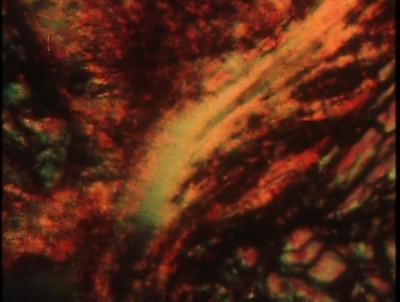 | 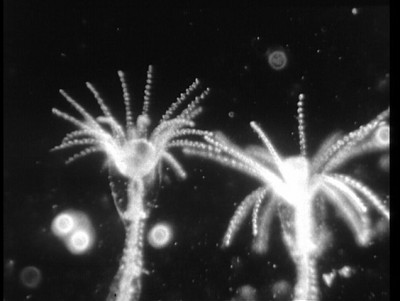 | The 23 Jean Painlevé films included in this set are as follows:
Presentation
Video:
The films are presented in their original aspect ratio of roughly 1.33:1. Although the transfers are up to Criterion's typical high standards, the film prints have not received the level of restoration typical of Criterion. All of the films suffer from some degree of damage ranging from minor scratches to significant print damage, but none are unwatchable. Detail, sharpness and contrast are typically very good, with color mostly looking fine through at times perhaps a shade too red.
Audio:
The original French DD mono is underwhelming with tinny audio further marred by tape hiss and distortion. Optional English subtitles are up to Criterion's typical standard.
Extras:
The extras consist of an optional new 95-minute score by American indie rock band Yo La Tengo to eight of Painlevé's popular shorts, an interview with the band, a 168-minute eight-part French television documentary series about Painlevé's life and work, and a 26-page booklet with an essay by film scholar Scott MacDonald.
Final Thoughts:
As nature documentaries, the films of Jean Painlevé pale in comparison to those available to modern audiences, but as examples of historic avant-garde filmmaking at the crossroads of science, politics, and art, they still have the capacity to shine.
|
| Popular Reviews |
| Sponsored Links |
|
|
| Sponsored Links |
|
|
| Release List | Reviews | Shop | Newsletter | Forum | DVD Giveaways | Blu-Ray | Advertise |
|
Copyright 2024 DVDTalk.com All Rights Reserved. Legal Info, Privacy Policy, Terms of Use,
Manage Preferences,
Your Privacy Choices | |||||||









